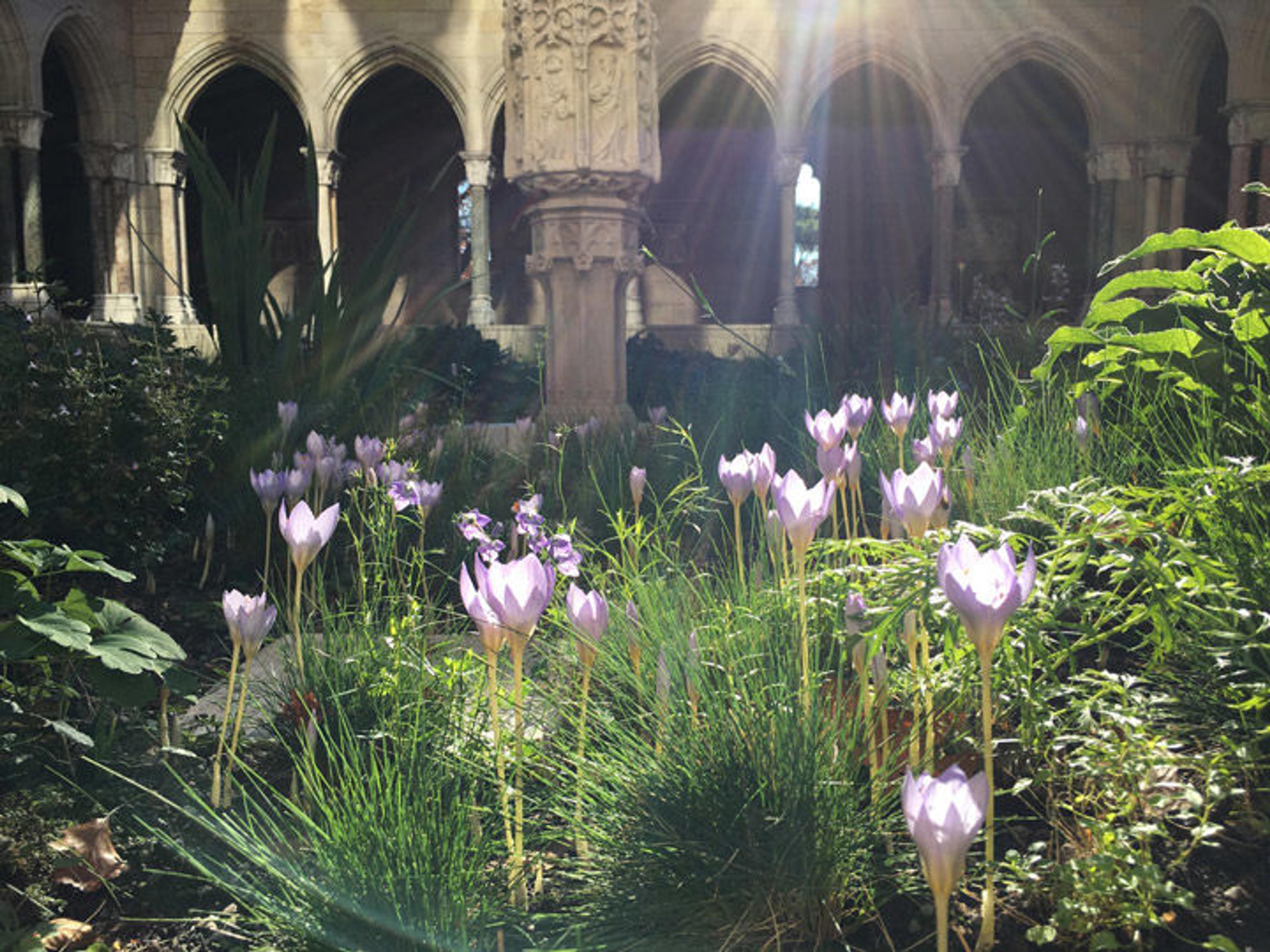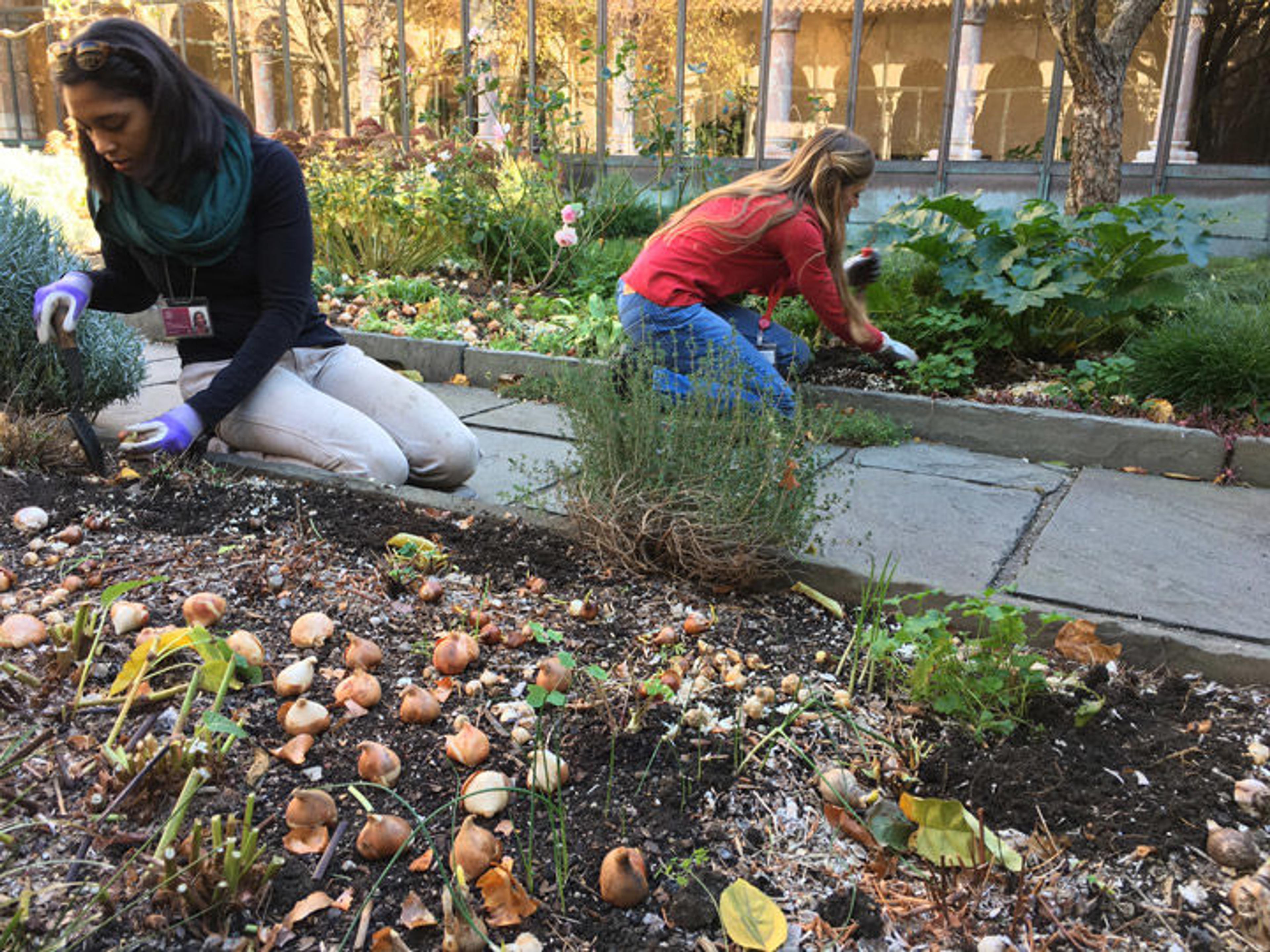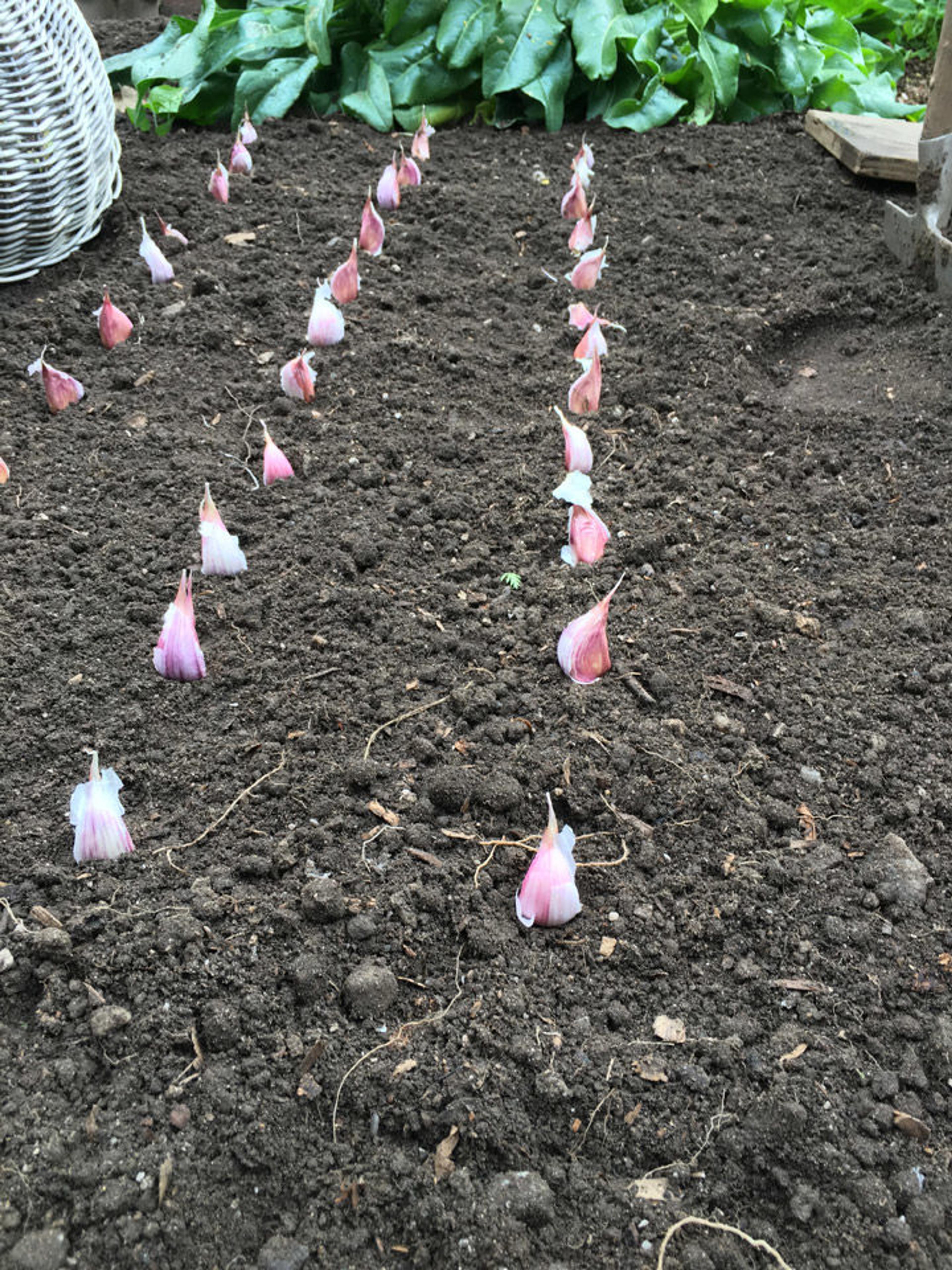
Fall-blooming crocus (Crocus speciosus) in the Trie Cloister Garden. Photos by the author
«This fall, we planted more than 30,000 bulbs at The Met Cloisters. Our typical plantings were augmented by the replanting of Trie Cloister Garden and a generous donation of bluebells for our grounds from our friends at Van Engelen. But, each year we plant an extraordinary number of bulbs. Most of our fall bulb plantings are within the enclosed gardens, especially the Judy Black Garden in the Cuxa Cloister. By and large, the bulbs will only flower once within the cloister. After the flowers have bloomed, the yellowing foliage and bulbs are lifted from the garden and planted on the outside grounds.»

Carly Still and Yvette Weaver planting bulbs in the Judy Black Garden in the Cuxa Cloister
A great number of factors are considered when designing our bulb planting. Bloom time, heights, and colors are all taken into account before the thousands of bulbs, in a myriad of shapes and sizes, are placed in the gardens between the freshly cropped perennials. Visitors to the gardens at this stage of the process are often surprised at the sheer number of bulbs literally packing the garden beds, and we are commonly asked when to expect the grand show. But, as with all of our plantings, the plants are carefully selected for staggered bloom times to ensure there is always something flowering in the garden. In fact, despite being planted only a few weeks prior, certain species of autumn crocus, including Crocus speciosus, and the cherished (and source of the world's costliest spice) saffron Crocus (Crocus sativus) are in full bloom (see Carly Still's "Dying for Color").

Cloves of Samarkand garlic (Allium sativum) in the Bonnefont Herb Garden. This garlic takes its name from the historic town of Samarkand in Uzbekistan, where it was collected in a marketplace. A UNESCO world heritage site, Samarkand was an important crossroads of the Silk Road. As a medicine and staple food, garlic has likely passed through this market hub for millennia.
After the autumn blooms, the outdoor garden activities and flowers quiet down for the winter. Thereafter, we focus our attentions on cultivating blooms, such as cyclamen and hellebores, behind the winter glass protection of the Cuxa Cloister. Meanwhile, our late winter, spring, and summer bulbs will begin to break dormancy and put down roots and lengthening leaves for the next show.